(S)-1-Boc-3-methylpiperazine
Synonym(s):tert-Butyl (S)-3-methyl-1-piperazinecarboxylate
- CAS NO.:147081-29-6
- Empirical Formula: C10H20N2O2
- Molecular Weight: 200.28
- MDL number: MFCD02683204
- EINECS: 206-459-5
- SAFETY DATA SHEET (SDS)
- Update Date: 2024-04-15 15:30:59
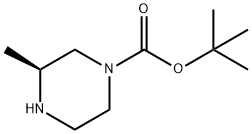
What is (S)-1-Boc-3-methylpiperazine?
Description
(S)-1-Boc-3-methylpiperazine is a hydrophobic compound that is structurally modified from the tetracyclic family of drugs. It has been shown to inhibit tumor cell growth by binding to the oncogene, KRASG12C, and downregulating its expression. This compound also inhibits cancer cell growth through the inhibition of the PI3K/AKT signaling pathway. The pharmacological effects of (S)-1-Boc-3-methylpiperazine are dependent on its ability to bind with high affinity to KRASG12C and inhibit its activity.
Chemical properties
colorless to yellow liquid
The Uses of (S)-1-Boc-3-methylpiperazine
Laboratory chemicals, Manufacture of substances.
The Uses of (S)-1-Boc-3-methylpiperazine
(S)-4-Boc-2-methylpiperazine ((S)-1-Boc-3-methylpiperazine) is a reagent used in the synthesis of benzamide peptidomimetic as non-ATP competitive inihbitors.
The Uses of (S)-1-Boc-3-methylpiperazine
Reactant involved in the synthesis of biologically activy molecules including:
- CCR5 antagonists with anti-HIV-1 activity
- Opioid receptor antagonists
- Human growth hormone secretagogue receptor antagonists for treatment of obesity
- Fatty acid oxidation inhibitors
Properties of (S)-1-Boc-3-methylpiperazine
| Melting point: | 40-45 °C |
| Boiling point: | 268.7±15.0 °C(Predicted) |
| alpha | -16 º (c=1 in dioxane) |
| Density | 0.997±0.06 g/cm3(Predicted) |
| storage temp. | Keep in dark place,Inert atmosphere,2-8°C |
| form | Crystalline Powder |
| pka | 8.52±0.40(Predicted) |
| color | White to yellow |
| optical activity | [α]/D -16±2°, c = 1 in dioxane |
| Sensitive | Air Sensitive |
| InChI | InChI=1S/C10H20N2O2/c1-8-7-12(6-5-11-8)9(13)14-10(2,3)4/h8,11H,5-7H2,1-4H3/t8-/m0/s1 |
| CAS DataBase Reference | 147081-29-6(CAS DataBase Reference) |
Safety information for (S)-1-Boc-3-methylpiperazine
| Signal word | Danger |
| Pictogram(s) |
 Corrosion Corrosives GHS05  Exclamation Mark Irritant GHS07 |
| GHS Hazard Statements |
H315:Skin corrosion/irritation H318:Serious eye damage/eye irritation H335:Specific target organ toxicity, single exposure;Respiratory tract irritation |
| Precautionary Statement Codes |
P280:Wear protective gloves/protective clothing/eye protection/face protection. P302+P352:IF ON SKIN: wash with plenty of soap and water. |
Computed Descriptors for (S)-1-Boc-3-methylpiperazine
| InChIKey | FMLPQHJYUZTHQS-QMMMGPOBSA-N |
| SMILES | N1(C(OC(C)(C)C)=O)CCN[C@@H](C)C1 |
New Products
Tert-butyl bis(2-chloroethyl)carbamate (S)-3-Aminobutanenitrile hydrochloride N-Boc-D-alaninol N-BOC-D/L-ALANINOL N-octanoyl benzotriazole 4-Hydrazinobenzoic acid 3,4-Dibenzyloxybenzaldehyde Electrolytic Iron Powder 1,1’-CARBONYLDIIMIDAZOLE R-2-BENZYLOXY PROPIONIC ACID 4-HYDROXY BENZYL ALCOHOL 1,1’-CARBONYLDI (1,2-4 TRIAZOLE) S-2-CHLORO PROPIONIC ACID (2-Hydroxyphenyl)acetonitrile 4-Bromopyrazole 5-BROMO-2CYANO PYRIDINE 5,6-Dimethoxyindanone 5-broMo-2-chloro-N-cyclopentylpyriMidin-4-aMine 3-(Hydroxymethyl)benzoate N-Boc-2-chloroethylamine 1-Bromo-2-methoxy-3-nitrobenzene N-Methyl-3-cyclopenten-1-amine 2-Bromo-3-hydroxybenzaldehyde 1H-indazole-5-carboxamideRelated products of tetrahydrofuran
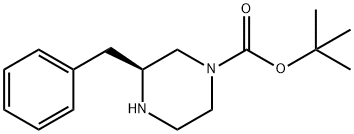
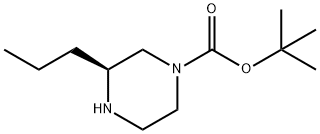
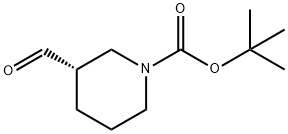
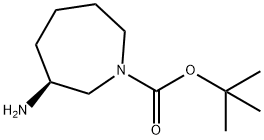
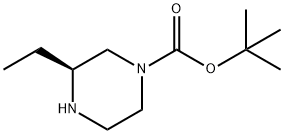

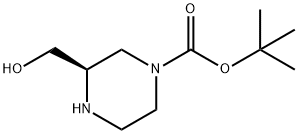

You may like
-
 (S)-1-Boc-3-methylpiperazine CAS 147081-29-6View Details
(S)-1-Boc-3-methylpiperazine CAS 147081-29-6View Details
147081-29-6 -
 7441-43-2 98%View Details
7441-43-2 98%View Details
7441-43-2 -
 1260741-78-3 6-Bromo-3-iodo-1-methyl-1H-indazole 98%View Details
1260741-78-3 6-Bromo-3-iodo-1-methyl-1H-indazole 98%View Details
1260741-78-3 -
 4-bromo-3,5-dimethylbenzenesulfonyl chloride 1581266-79-6 98%View Details
4-bromo-3,5-dimethylbenzenesulfonyl chloride 1581266-79-6 98%View Details
1581266-79-6 -
 2490430-37-8 98%View Details
2490430-37-8 98%View Details
2490430-37-8 -
 N-(5-Amino-2-methylphenyl)acetamide 5434-30-0 98%View Details
N-(5-Amino-2-methylphenyl)acetamide 5434-30-0 98%View Details
5434-30-0 -
 124371-59-1 98%View Details
124371-59-1 98%View Details
124371-59-1 -
 53857-52-2 98%View Details
53857-52-2 98%View Details
53857-52-2